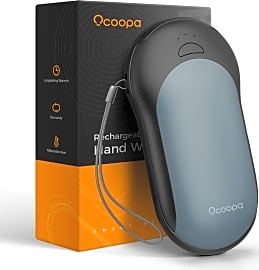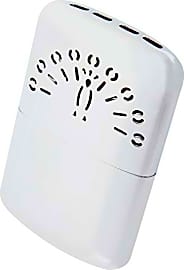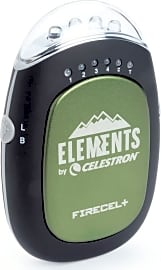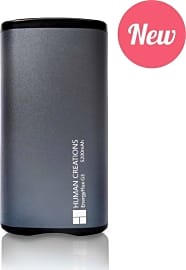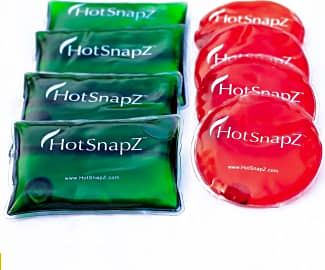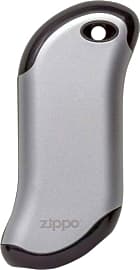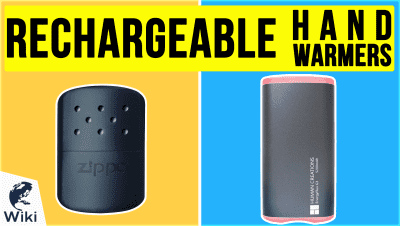The 10 Best Hand Warmers

This wiki has been updated 41 times since it was first published in October of 2015. When the colder weather starts to creep in, hunters, hikers, joggers, walkers, athletes, and anyone else spending time outside will appreciate these affordable and functional hand warmers. Fueled by chemical reactions, battery power, or lighter fluid, and encompassing both disposable and reusable solutions, the options on this list can help keep your extremities toasty and comfortable. When users buy our independently chosen editorial selections, we may earn commissions to help fund the Wiki.
Editor's Notes
October 14, 2020:
We updated this list with an eye toward practicality, which meant scrapping models with small batteries like the Zippo HeatBank 3 and Celestron Elements ThermoCharge. Both brands make newer and more useful models (the Zippo HeatBank 9s and Celestron FireCel Plus) that join our list instead. Lithium-ion batteries have a habit of underperforming in the cold, which means that manufacturer-listed runtimes are seldom duplicated in the wild. That's why our favorite electric warmer is the Ocoopa Fast-Charging, which packs an extra-large battery and is one of the first models to support quick charging. Skiers, snowboarders, and those with Raynaud's Syndrome should also look into heated gloves, which distribute heat more evenly than a single warmer. Reliability was another deciding factor in our rankings, which is why the catalytic Zippo Refillable and the disposable HotHands Packets still earn top marks. If it ain't broke...
October 24, 2019:
Cold hands can be so much more than just a minor annoyance, so we have kept a selection of options that offer hours of operation for ongoing relief. These still include The Outdoors Way Rechargeable and the Zippo Hand Warmer, battery-operated and fuel-burning models, respectively. It should be noted that the Zippo option, like most of its kind, does not have an on/off switch; if you want something you can turn on for a little while, then put away, it may not be your best bet. We've also opted for the newer EnergyFlux G3 from Human Creations over the EnergyFlux Ellipse. It boasts an updated slide switch that is a bit easier to use, as well as stronger temperature control that creates a better warming experience overall. The styling is a little different, too, although whether one looks better than the other is largely a matter of personal opinion. Finally, for those who have trouble with bigger models, we added the Zippo HeatBank 3. It fits neatly in the hand as well as in a pocket of a messenger bag or travel purse. Keep in mind, though, that it runs for about three hours, which isn't as long as many.
Special Honors
Hammacher Schlemmer Infrared Hand Pain Reliever If it's not only cold but also pain that plagues your hands, the Hammacher Schlemmer Infrared Hand Pain Reliever might bring you the comfort you seek. With its infrared and red LEDs, it can reduce inflammation and keep your hands toasty, but only one at a time, as the mitt wasn't made to hold two hands at once. hammacher.com
Warmth In The Extremities: Choosing A Hand Warmer
Some units will burn for as long as 12 hours on a single fill.
Hand warmers fall into three main categories: those that use a chemical reaction to produce heat, those that use an electric battery for warmth, and those that use an actual self-contained fuel burner.
Chemical reaction hand warmers have one major benefit over their counterparts: they are always ready to snap into action, needing no charge from an electrical outlet or fuel-filled reservoir. They work either by a reaction caused by exposure to air or by the mechanical mixing of ingredients within their pouch-style housing. The drawback to these hand warmers is that most are single-use items that provide heat for several hours and then must be discarded. (Some varieties are re-usable, with their heating ability restored by boiling the pouches in water -- these types tend to produce lower amounts of heat, though.)
Electric hand warmers offer the obvious benefit of ease-of-use. Once charged, they produce heat literally at the flick of a switch or push of a button. This alleviates any confusion that might be caused by activating chemically reactive warmers and removes the unease some people feel around fuel-burning units. Many such devices even offer several different heat settings, allowing you to customize your warming regimen, as it were. The most obvious limitation these devices suffer is the temporary warming they proffer, which comes followed by often protracted charging periods. And of course in an area without access to a battery or power outlet (such as the middle of the forest), they quickly become paperweights.
Fuel-burning hand warmers have been a mainstay of outdoorsmen and hunters for generations. They can provide hours upon hours of heat, with their function limited only by the supply of fuel you have on hand. Some units will burn for as long as 12 hours on a single fill. These units burn without any open flame and are in fact even safe when tucked away into a pocket. Their use does require carrying a store of fuel and way to create a flame for ignition, however.
(It should be noted that there is, arguably, a fourth category of hand warmers that is essentially nothing more than an insulated sleeve into which you can place your hands. These are commonly seen used by quarterbacks playing football on frosty days. This type of warmer creates no actual warmth, though, merely relying on your own body heat for effect.)
Ways To Help Keep Hands Warm
The body is fantastically adept at keeping itself cool in hot weather and warm in cooler conditions. The process is known as thermoregulation and involves everything from sweating and evaporative cooling to shivering and constricted blood vessels. When the ambient temperature is especially cold, your body quickly turns to this latter step, properly known as vasoconstriction, tightening capillaries and reducing blood flow to extremities. This ensures blood endures less proximity to frosty air and keeps that warmed blood closer to your core, providing heat for vital organs housed in your torso.
Another way to keep hands and fingers comfortable when the weather is cold is to keep your entire body warm.
Effective as the process may be, vasoconstriction worsens the biting cold your fingers feel; that's where human ingenuity comes in. With a hand warmer tucked into your pocket, mitten, or held tight in your fist, your hands will soon be warm again and ready for anything from typing to building a fire to driving to work on a winter morning.
Another way to keep hands and fingers comfortable when the weather is cold is to keep your entire body warm. This means dressing properly from head to toe. Rather than simply tossing a coat on over the outfit you're already wearing, think of cold weather garb holistically. Wool socks provide better warmth (and moisture control) than cotton, for example; a covered neck and head preserve some twenty percent of your body heat; a warm core leads to warmer fingers, but exposed fingers cause a cooler core. This type of interconnected thinking will help you plan and dress accordingly, potentially preventing cold hands in the first place.
If you are already out and about and fear your extremities will soon be chilled, consider staving off the cold by keeping your core heated with a hot beverage. If no warm drink (or food) is readily available, exercise is another surefire and lasting way to warm your core, thereby creating warmer blood that elevates the temperature in extremities. Just make sure not to exercise so much that you sweat, as this can have a dramatic and dangerous counter-productive effect when the sweat cools and even freezes on your clothing and body.
Also remember that mittens are more effective than gloves when it comes to keeping your hands warm, as they keep your fingers together and allow them to share what warmth they have. If your hands are chronically cold and uncomfortable, consider speaking to a doctor about potential issues such as Reynaud's Disease.
When Cold Fingers Are In Actual Danger
When your hands are cold enough to tingle or hurt, the situation might not be simply unpleasant; it might be downright dangerous. Frostbite is the name given to the exceptionally unpleasant situation in which the flesh actually becomes frozen. When the temperature is low enough, especially when accompanied by windchill, frostbite can occur in less then ten minutes.
That's because nerves that usually respond quickly to sensations of pain or heat are less receptive when your hands are cold.
The indications you might be at risk for frostbite start with tingling and redness. These symptoms are signs that you must immediately move into a warmer environment or take steps to directly warm the afflicted body parts. Once flesh has lost its color, turning from red into a whitish hue, and when tingling and pain give way to numbness, frostbite has already set in.
While warming up those frigid fingers is critical to preventing potentially serious, long-term injuries, make sure you bring them back to warmth with care. Cold fingers are at increased risk for injury caused by a cut, a puncture, and -- ironically -- a burn. That's because nerves that usually respond quickly to sensations of pain or heat are less receptive when your hands are cold. That makes tasks such as using a knife or saw, lighting a fire, or even brushing past a surface that might scratch your skin (a brick wall, tree trunk, or chain link fence) more potentially dangerous than when your extremities are warm.



